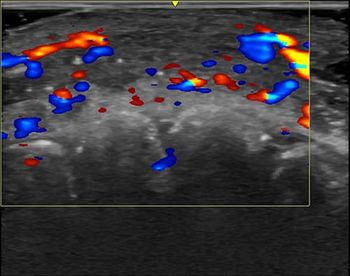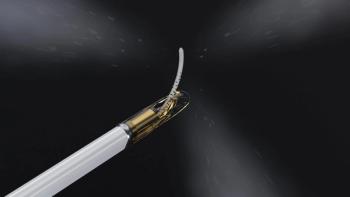
CAD holds key to future of CT colonography
Few radiologists would disagree that computer-assisted detection in the colon has a long way to go before it is ready for routine clinical implementation. But once the remaining technical challenges have been overcome, advocates for CT colonography screening will have a far stronger case, according to speakers at the Computer Assisted Radiology and Surgery meeting in June.
Few radiologists would disagree that computer-assisted detection in the colon has a long way to go before it is ready for routine clinical implementation. But once the remaining technical challenges have been overcome, advocates for CT colonography screening will have a far stronger case, according to speakers at the Computer Assisted Radiology and Surgery meeting in June.
Colon cancer is a major killer in the industrialized world. In Germany, for instance, it is responsible for 20,000 deaths a year, making it the second most common cause of cancer mortality, said Dr. Patrik Rogalla, a radiologist at the Charité Campus Mitte, Medical University of Berlin. Unlike most other malignancies, however, the progression from precancerous morphology to invasive malignancy is relatively slow, giving doctors a long window of opportunity to detect and treat early-stage disease.
"Over 95% of colon cancers arise from benign polyps," Rogalla said. "And when using the right approach to CT colonography, we are able to detect even the smallest polyp."
Getting the most from CT colonography may mean scrolling through an entire 3D data set, he said. Development of a CAD package capable of speeding up this process without losing sensitivity would be a significant step forward.
"If it takes more than half an hour for a radiologist to go through a poorly prepped case, this tool will never take off," Rogalla said.
At least five companies and several academic institutions are working on colon CAD packages, according to Hiroyuki Yoshida, Ph.D., an associate professor of radiology at the University of Chicago. Each will need to tackle four major hurdles before claiming to have a clinically viable product.
Colon CAD systems generally work by segmenting the colon wall, detecting candidate polyps, eliminating likely false-positive results, and displaying suspect polyps. The first step may be complicated if the bowel wall is not fully distended or has been insufficiently cleansed, Yoshida said. Polyp detection, which is usually based on shape analysis, can struggle to find polyps that are flat, depressed, smaller than 5 mm, or obscured by artifacts. And bowel folds and residual stool may not be recognized as false positives. Finally, colon CAD results must be optimally integrated into radiology workflow.
"The main challenge is to substantially lower the false-positive rate while maintaining a high sensitivity," he said. "Large-scale evaluation is needed to achieve this, because, especially for colon CAD, most trials have been based on less than 100 polyps. Evaluation of larger data sets with at least 1000 polyps needs to be done."
Yoshida cautioned that tackling existing problems with colon CAD may produce additional problems. For example, implementation of fecal tagging may avoid confusion between stool and polyps, but enhancing excrement may then obscure small polyps.
"New technical challenges are now emerging because of changes to CT colonography protocols," he said.
For more information, visit Diagnostic Imaging's
Newsletter
Stay at the forefront of radiology with the Diagnostic Imaging newsletter, delivering the latest news, clinical insights, and imaging advancements for today’s radiologists.




























